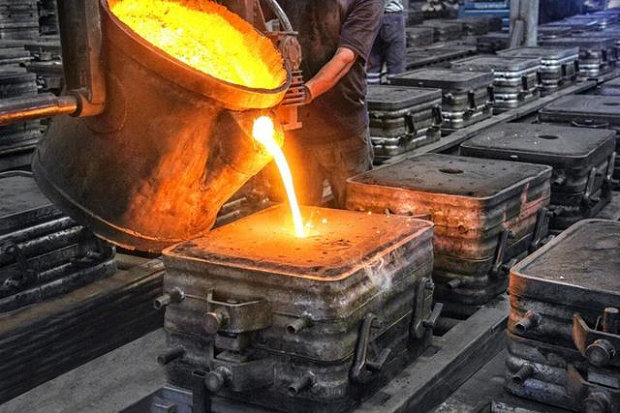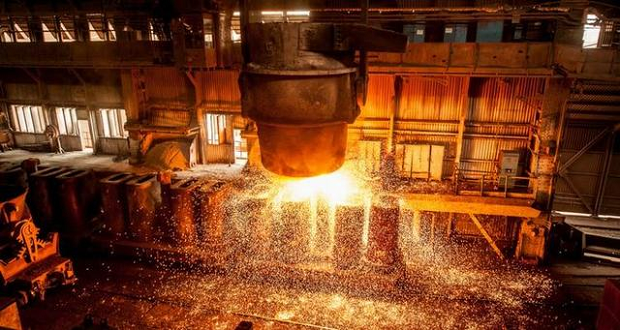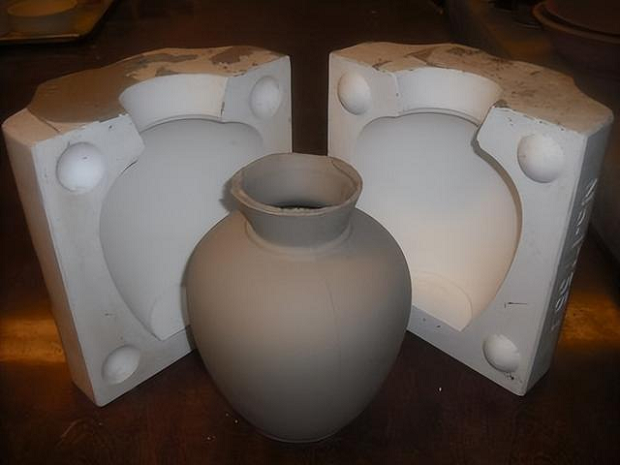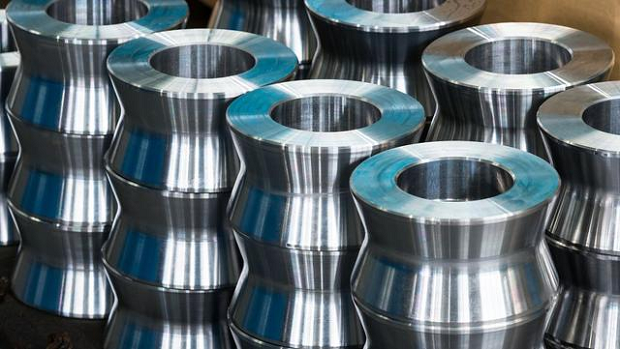Casting is the technique of hardening a liquefied substance, such as molten metal, by pouring it into a specifically formed mold chamber. After solidification, the workpiece is taken from the mold and either finished or used as a finished product. Casting technologies are frequently employed to manufacture complex solid and hollow structures and casting products are used in a variety of industries, including automotive and aerospace parts.
More resources

Different types of casting process, how to choose?
Although casting is one of the oldest known production procedures, recent improvements in casting technology have resulted in a wide range of specialized casting methods. Die casting, precision casting, gypsum casting, and sand casting are all thermoforming methods that have distinct production advantages. Comparing the benefits and drawbacks of common casting methods aids in determining which method is best suited for a certain production run.

1.Casting in sand
Sand casting is often done with silica materials like synthetic sand or naturally bonded sand. Cast sand is often made up of finely ground spherical particles that can be densely packed together to make a smooth molded surface. By permitting modest flexibility and shrinkage throughout the cooling portion of the process, the casting is designed to limit the chance of tearing, cracking, or other flaws. Sand can also be fortified by the addition of clay, which helps the particles stick more closely. Sand casting is used to make automotive parts such as engine blocks.

Platemaking, molding, melting and pouring, and cleaning are all processes in the sand casting process. A pattern is a type of sand buildup that is usually separated into two sections. The adhesive blocks are removed and the pattern extracted once the sand has been compacted sufficiently to reproduce the pattern. Then, replace the shaft and install any additional plugins known as core boxes. The castings are removed when the metal has been poured and solidified, the risers and gates used in the pouring operation are cut, and any adhering sand and scale are removed.
The primary benefits of sand casting as a casting method are as follows:
Relatively low production costs, particularly in small batch production.
Capability to create massive components.
Capable of casting ferrous and non-ferrous materials.
Low mold cost after casting.
Sand casting produces less precision than other methods, and it is difficult to predetermined the size and weight specifications of sand castings. In addition, the process tends to produce products with a relatively rough surface finish.
2. Precision casting
Precision casting use a disposable wax model for each casting. The wax is injected directly into the mold, removed, and then coated with refractory and adhesive, usually in stages, to make a thick shell. On a single gate, many patterns are assembled. Once the shell has hardened, the pattern is turned upside down and baked in an oven to remove the wax. The molten metal is then poured into the remaining shell, where it hardens into the shape of a wax mold. Disassemble the refractory housing to see the completed casting. Investment casting is often used to manufacture parts for the automotive, power generating, and aerospace sectors, including as turbine blades. The following are some of the primary benefits and drawbacks of investment casting:
- High precision and accurate dimensional results.
- Ability to create thin-walled parts with complex geometry.
- Ability to cast ferrous and non-ferrous materials.
- The surface finish and detail quality of the final parts are relatively high.

Although investment casting is exceedingly accurate, it is frequently more expensive than other similar casting procedures, and it is usually only cost-effective when sand or gypsum castings are not possible. However, because of the high surface quality of precision castings, the cost can occasionally be offset by lower machining and mold expenses.
3. Gypsum casting
Gypsum casting is similar to the sand casting process, using a mixture of gypsum, strengthening compounds, and water instead of sand. Plaster patterns are usually coated with anti-adhesive compounds to prevent them from sticking to the mold, and plaster is able to fill any gaps around the mold. Once gypsum material is used to cast parts, it often cracks or forms defects and needs to be replaced with a new material. Advantages of gypsum casting include:
- Very smooth surface finish.
- Capable of casting complex shapes with thin walls.
- The ability to form large parts at less expense than other processes, such as investment casting.
- Higher dimensional accuracy than sand casting.

This process tends to be more expensive than most sand casting operations and may require frequent replacement of gypsum molding materials. When the quality of the surface finish is an important requirement, it is usually more efficient and cost effective. Its application is generally limited to casting aluminum base and copper base alloys.
4. Die casting (metal casting method)
Die casting is a high-pressure method of creating non-ferrous metals and alloys such as zinc, tin, copper, and aluminum. The reusable molds are coated with a lubricant to help regulate mold temperature and aid with component ejection. The molten metal is subsequently pumped under high pressure into the mold, and the mold stays continuous until the workpiece solidifies. This accelerated insertion prevents any component of the material from hardening before casting.

After the process is complete, the component is removed from the mold and any scrap material is removed. Some of the key benefits offered by die casting include:
- Tight size and shape tolerances.
- High component size consistency and uniform design.
- Reduce the need for post-casting processing.
Die casting has a relatively high tool cost as a metal casting method, making it more cost-effective in high-volume product runs. It can also be difficult to ensure the mechanical qualities of die-cast parts, which means that these products are often not suitable for structural applications. Because die casting molds are often two-piece, it is limited to goods that can be withdrawn from the mold without breaking the mold, as is done in other casting methods.
5. Centrifugal casting
Centrifugal casting is used to produce long cylindrical parts, such as cast iron pipes, relying on the gravity generated in spinning dies. The molten metal introduced into the mold is thrown onto the inner surface of the mold to produce a casting that can be void-free. The method was originally invented using water-cooled molds as a de Lavaud process and is suitable for symmetrical parts, such as soil tubes and large gun barrels, with the advantage of producing parts using a minimum number of risers. For asymmetrical parts that cannot be rotated around their own axis, a variant of centrifugal casting (called pressure casting) arranges multiple parts around a common gate and rotates the mold around that axis. A similar idea applies to the casting of very large gear rings, etc. Depending on the material being cast, either metal or sand mold can be used.

6. Permanent casting
Permanent mold casting has similarities to die casting and centrifugal casting, especially the use of reusable molds. These can be made from steel, graphite, etc., and are commonly used for casting materials such as lead, zinc, aluminum-magnesium alloys, certain bronze, and cast iron. This is a low-pressure pouring process that is usually done by hand using multiple molds on a turntable. As the molds rotate in the various stations, they are coated, closed, filled, opened, and emptied in turn. One of these methods is called slush casting, in which the mold is filled but emptied before the metal is fully hardened. Molten metal is poured from the casting to produce a hollow cast shell. A similar idea has been used to shape hollow chocolate products, such as the Easter Bunny. Using a metal mold allows for faster heat transfer through the mold, hardening the casing while the core remains liquid.
It is critical to select the best technique and expertise for your product. JH MIM, which began as metal injection molding, has built a solid product ecosystem by investing in beneficial firms in allied industries. It can now offer consumers one-stop services like powder metallurgy, Die Casting, CNC, and 3D printing. It has integrated assembly capabilities as well as the level of quality suppliers stated above. Please see the link below for further details.
Please visit our website for additional information or to receive a free, no-obligation estimate.
Die Casting – Source: Wikipedia
